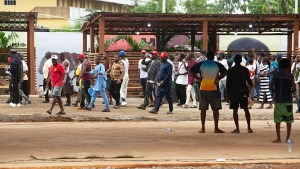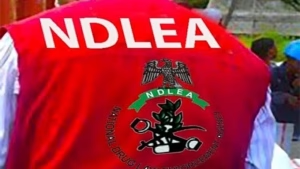West Africa: Surviving the Sahel – Stories of Resilience in Cameroon’s Far North

The torrential rains that swept through Baléma village in Cameroon’s Far North in 2024, did more than cool the air–they triggered devastating floods. For 75-year-old Mahamat Adoum and his family of eleven, the floods meant the loss of everything: their home, livelihoods, and sense of stability. Forced to flee with little more than hope, they joined thousands of others displaced by one of the worst climate disasters in the region in recent years.
The Far North, already vulnerable due to years of climate change, was battered by violent winds and relentless rains. In the Logone and Chari department, rainfall exceeded historical averages by over 25%, causing the Logone River and its tributaries to overflow. Over 843,000 hectares were submerged, including 82,500 hectares of cropland, 263 schools, 47 health centers, and more than 56,000 homes. Thirty lives were lost, and 356,730 people–including 21,115 refugees–were affected or displaced.
Mahamat and his family found temporary refuge in Tildé, where they endured hot days and cold nights under makeshift shelters, exposed, with little privacy. Overcrowding and poor sanitation created fertile ground for waterborne diseases and increased the risk of gender-based violence, compounding the trauma of displacement.
But help arrived–not just as emergency aid, but as a pathway to recovery. In close coordination with the Government of Cameroon, and under its leadership, a comprehensive response plan was deployed with the support of humanitarian partners. Food and relief items were distributed to refugees and internally displaced people alike. The entire intervention was conducted in alignment with the Government’s flood response strategy and evaluated under its guidance, ensuring that all efforts supported national priorities and the needs of affected communities.
With funding from the Central Emergency Response Fund (CERF), UNHCR and its partner Public Concern constructed two climate-resilient shelters for Mahamat’s family. These were not just buildings–they were homes, designed with cultural sensitivity and built with the family’s own hands. Mahamat and his relatives molded mud bricks and laid them with care, reclaiming their dignity in the process. The shelters were equipped with essential items–mats, blankets, mosquito nets, jerrycans, buckets, and kitchen kits–to restore a sense of normalcy and peace.
“Today, my family lives in safety and dignity. We have regained our self-respect and peace of mind,” Mahamat says, his voice steady with quiet pride.
Mahamat’s story is one of many. Across the flood-stricken region, families are rebuilding their lives–not only those displaced by climate disasters, but also those uprooted by conflict. Over 26,000 people (5,359 women, 4,373 men, 8,682 girls, 8,141 boys and 196 people living with a disability) benefitted from rapid response rolled out with funding from CERF.
The emergency response in Tildé, made possible through CERF’s Rapid Response funding, laid the groundwork for longer-term recovery. But as the needs deepened and evolved–especially in protracted displacement settings like Minawao–additional support was required. Originally designed for 15,000 people, the Minawao camp has grown into a dynamic community of over 80,000, reflecting the region’s remarkable spirit of solidarity and resilience, while also highlighting the need for continued investment in infrastructure and services to meet evolving needs. Through CERF’s Underfunded Emergencies window, UNHCR and partners were able to scale up more sustainable interventions, focusing on resilience, livelihoods, and self-reliance for both refugees and host communities.
In the Minawao refugee camp, Ali Abatcha, a Nigerian refugee, is recultivating the courage to move on in a local farm. Forced to flee violence in Banki, Borno State, in 2016, Ali arrived in Cameroon with nothing but memories and uncertainty. Life in the camp was difficult, and when food assistance dwindled in 2024 due to funding shortages, many refugees turned to small-scale farming to survive.
Ali was among them. On a parcel of a 151-hectare piece of land granted by the state, he began growing off-season millet, coaxing life from the dry soil. His determination paid off. With support from UNHCR and CERF, a borehole was installed for agricultural use, irrigating the scorched earth to improve soil fertility. The first harvest of sorghum and millet amounted to over 50 tons.
Now, with a vast portion of land and a reliable water source, he’s preparing to grow tomatoes and cucumbers–not just for his family, but for the entire community.
“These are essential vegetables,” he says. “They nourish us, and they can sustain us.”
But Ali’s ambitions don’t stop at feeding his neighbors. He dreams of marketing his produce, contributing to the local economy, and redefining what it means to be a refugee. “All I need now are seeds and fertilizers,” he says–not as a plea, but as a plan.
The CERF plays a vital role in making these transformations possible. Its primary objective is to deliver life-saving protection, shelter, and multi-sector assistance to vulnerable communities across Cameroon. Through this, and other donor flexible contributions, UNHCR strengthens protection monitoring efforts, provides essential shelter and non-food items, and supports refugees, internally displaced people and host communities.
Yet, as needs continue to outpace resources, the stories of Mahamat and Ali serve as powerful reminders: resilience alone is not enough. To sustain and expand life-saving interventions–whether for those displaced by floods or by conflict–urgent and increased funding is essential. With continued support, we can ensure that dignity, safety, and opportunity remain within reach for all.
By UNHCR.



